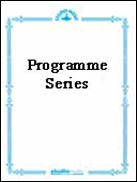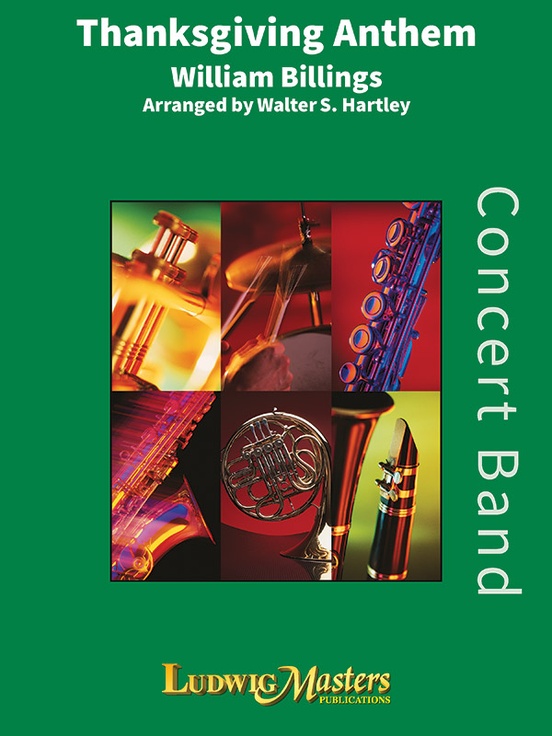Results
-
 £54.95
£54.95ELEGY 1944 (Anthem for a Regiment) (from Commemorations) (Trumpet Solo with Concert Band - Score and Parts) - Ellerby, Martin
The fourth movement of Commemorations, this work is a solo cornet or trumpet feature in memory of the Guards Royal Military Chapel's tragic bombing during the Second World War. Duration: 4:10. Recorded on Polyphonic Concert Band CD QPRM158D Legacy of Dreams.
Estimated dispatch 7-14 working days
-
 £79.50
£79.50Carnegie Anthem - William Owens
Open your concert with this short and incredibly dynamic fanfare that hits the ground running and does not let up until the final chord is ringing in the concert hall! Premiered in the world class Carnegie Hall, this work is harmonically rich, tuneful and exciting. A fantastic way to open a program!
Estimated dispatch 3-5 working days
-
 £22.95
£22.95Thanksgiving Anthem - William Billings / arr. Walter S. Hartley
Estimated dispatch 3-5 working days
-
 £144.99
£144.99Festa Paesana - Jacob de Haan
Lunteren, a village on the Veluwe (a wooded region in the Netherlands), sets the scene annually for a village festival dominated by folklore. Festa Paesana (Italian for village festival) is set to music by several folkloric sketches. The theme in Festa Paesana is partly based on a Dutch anthem (Wien Neerlands bloed); when other lyrics are used it is also known as the Lunteren anthem.The work begins with a festive introduction, completed by chimes and drums, in which pieces of the Lunteren anthem are heard. The music then transitions to represent a horse auction. We hear horses run their first rounds in the auction ring while being whipped. The following theme is partly basedon the anthem. The tension of the traditional auction is amplified by an ever-increasing cadence, reaching its climax when the word ?Sold!? is shouted. The night ends with a majestic variation on the Lunteren anthem.The next morning, when the tower clock hits seven times, the village is awaked by the reveille of the heralds. In a fugatic version of the anthem, we can hear the village slowly come to life. This evolves with the chiming of all towers in the village; the celebration can begin. Carriages drawn by horses rumble through the village and thus, it is easy to hear when a horse hesitates or runs amuck. A traditional folk dance group then dances a whirling waltz while the audience shares their pleasure. Musicians march along the scene and take over the waltz theme in their march. Until deep in the night, the musicians are still heard playing in the streets. Meanwhile, we hear the anthem theme being played in a choral variation (in minor). The first time it is played quietly, as a preparation for Sunday. Then it is played in a celebrating way, enabling the devout village residents to remember the past pleasant celebration with satisfaction.
Estimated dispatch 7-14 working days
-
£144.99
Festa Paesana Wind Band Set (Score & Parts)
Lunteren, a village on the Veluwe (a wooded region in the Netherlands), sets the scene annually for a village festival dominated by folklore. Festa Paesana (Italian for village festival) is set to music by several folkloric sketches. The theme in Festa Paesana is partly based on a Dutch anthem (Wien Neerlands bloed); when other lyrics are used it is also known as the Lunteren anthem.The work begins with a festive introduction, completed by chimes and drums, in which pieces of the Lunteren anthem are heard. The music then transitions to represent a horse auction. We hear horses run their first rounds in the auction ring while being whipped. The following theme is partly based on the anthem. The tension of the traditional auction is amplified by an ever-increasing cadence, reaching its climax when the word ?Sold!? is shouted. The night ends with a majestic variation on the Lunteren anthem.The next morning, when the tower clock hits seven times, the village is awaked by the reveille of the heralds. In a fugatic version of the anthem, we can hear the village slowly come to life. This evolves with the chiming of all towers in the village; the celebration can begin. Carriages drawn by horses rumble through the village and thus, it is easy to hear when a horse hesitates or runs amuck. A traditional folk dance group then dances a whirling waltz while the audience shares their pleasure. Musicians march along the scene and take over the waltz theme in their march. Until deep in the night, the musicians are still heard playing in the streets. Meanwhile, we hear the anthem theme being played in a choral variation (in minor). The first time it is played quietly, as a preparation for Sunday. Then it is played in a celebrating way, enabling the devout village residents to remember the past pleasant celebration with satisfaction. 0:08:10
Estimated dispatch 7-14 working days
-
 £95.99
£95.99Juvavum Fanfare - Andreas Ziegelbäck
The Juvavum Fanfare was composed for the closing concert of the first part-time University course in Wind Orchestra Conducting at the renowned Mozarteum University Salzburg, which took place from 2019 to 2021 for the first time. This celebratory opening composition is dedicated to the esteemed course instructor and conductor, Martin Fuchsberger, as well as to all the graduates who successfully completed this program. The name of the fanfare, "Juvavum," derives from the ancient Roman name for Salzburg. This connection to Salzburg is not only evident in the premiere of the piece at the Mozarteum Salzburg but also in its musical depth. Thematically, the initial fanfare and subsequent lyrical section draw from the melody of Salzburg's regional anthem, "Land uns'rer Vter." The majestic fanfare echoes the opening intervals of this anthem. From bar 27 onward, a direct citation of the melodic theme can be heard. Both the fanfare motifs and the vocal lines of this anthem are eventually brought together in an exhilarating final section. The Juvavum Fanfare is ideally suited to ceremonially open concerts and provides an engaging experience for both listeners and musicians alike due to its appropriate length.
Estimated dispatch 7-14 working days
-
 £118.99
£118.99A Centennial Adventure - Thomas Doss
"100 Years of the Republic of Austria" should be an occasion to reflect on the value of freedom and democracy, precious treasures that don't grow on trees but which have to be fought for again and again. The imperial anthem composed by Franz Josef Haydn, which to this day, survives as the German national anthem, has played a very special role in the story of Austria. It seems that Haydn was inspired by a Croatian folksong. It was sung in Burgenland Croatian areas in various versions under the title "Atal se jesem" ("I am standing"). The composer wrote this piece as a tribute to all people standing up for democracy in the name of mankind. A festive and impressive piece forcelebrational events alike!
Estimated dispatch 7-14 working days
-
 £106.99
£106.99The Way to Heaven - Philip Sparke
The Way to Heaven was commissioned by the Royal Air Force Music Services. 2015 was the 75th anniversary of the Battle of Britain, which took place between July and October 1940, when the courageous fighter pilots of the Royal Air Force thwarted Hitler's ambitions to launch an invasion on the UK.The Way to Heaven opens with fluttering woodwind figures and brass fanfares, which build to a climax before a change of key introduces a short quotation for the Polish National Anthem - Mazurek Dbrowskiego. This fades and you can hear the signal to scramble and the throaty sounds of the squadron's Merlin engines bursting into life before theyline up to take off. This leads to the main thematic material of the work, which depicts the heaven-bound flight of 303 Squadron as it climbs to intercept the incoming Messerschmitt 109s. A brief allusion to the Polish national anthem brings the piece to a triumphant close.
Estimated dispatch 7-14 working days
-
 £115.60
£115.60Ungarsk marsj - Hector Berlioz
The "Rkczi March" (Hungarian March) was the unofficial state anthem of Hungary before Ferenc Klcsey wrote the Himnusz which is today the official national anthem of Hungary. The first version of this march-song was probably created around 1730 by one or more anonymous composers, although tradition says that it was the favorite march of Francis Rkczi II. That early version called back Francis Rkczi II to save his people. It was very popular in the 18th century but in the 19th century the more refined Rkczi March became prevalent. Hector Berlioz included the music in his composition "La Damnation de Faust" in 1846, and Franz Liszt wrote a number of arrangements, includinghis Hungarian Rhapsody No. 15, based on the theme. The march gave its name to a 1933 Austrian-Hungarian feature film - Rakoczy-Marsch This arrangement is based on Berlioz instrumentation and phrasing from his Hungarian March, but in the form of the 19th century Rkczi March
Estimated dispatch 7-14 working days
-
 £115.60
£115.60Hymne til gleden - Ludwig van Beethoven
Schiller's text of 1785 was partially used by Beethoven in1824 when he did finish the 4th movement of his 9th Symphony. The melody has later been used in very many contexts. As the anthem of the European Union, a lot of movies (A clockwork Orange, Die Hard, etc.), music to video games, as the anthem of Rhodesia, as rebel song in Chile and by FIFA. Therefore, it can be used in most settings This Young Band arrangement focuses on the main melody. In the original, the B part is repeated in each variation, but to get three variations (out of four), this repetition has been cut. The first variation should be played as soft as possible, but still with a nice sound. Crescendo to forte(f) and going back to pp should be as a surprise.
Estimated dispatch 7-14 working days
